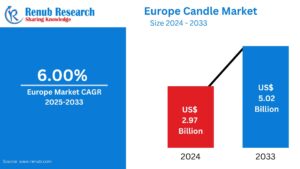The cryptocurrency market in 2025 is a wild ride, with soaring highs and gut-wrenching dips keeping traders on edge. One term dominating X posts and trading forums is crypto liquidations, as billions in leveraged positions get wiped out during volatile swings. But what exactly are these liquidations, and why are they shaking up the market this year? This blog breaks down the mechanics, triggers, and trends behind crypto, offering insights into what’s fueling the 2025 market shakeout and how investors can stay ahead.
What Are Crypto Liquidations?
Crypto liquidations happen when leveraged trading positions are forcibly closed by exchanges due to insufficient funds to cover losses. Imagine you borrow $90,000 to buy Bitcoin at $95,000, expecting it to hit $100,000. If BTC drops to $92,000, your position might get liquidated if you can’t cover the loss, forcing the exchange to sell your assets to recover the loan. In 2025, these liquidations are surging, with over $2.3 billion in positions wiped out in a single week in May, according to CoinGlass data.
Leveraged trading, common on platforms like Binance, Bybit, and OKX, amplifies gains but also risks. Traders use margin (borrowed funds) to bet on price movements, often at 10x or 100x leverage. When prices swing sharply, those over-leveraged get caught in crypto liquidations, triggering cascading sell-offs that deepen market dips.
Why Are Crypto Liquidations Spiking in 2025?
The 2025 bull run, with Bitcoin peaking at $97,000, has fueled a leverage frenzy. X posts show traders piling into long positions, betting on BTC hitting $100,000. But volatility is a double-edged sword. A 5% dip in May triggered $1.5 billion in crypto liquidations, mostly longs, as Bitcoin fell to $92,000. Altcoins like Ethereum ($4,800) and Solana ($220) also saw $800 million in liquidations, per Bybit’s liquidation heatmap.
Several factors are driving these liquidations:
- Market Volatility: The Fear & Greed Index hit 75 (Extreme Greed) in April 2025, encouraging risky bets. Sudden corrections, like May’s 7% BTC drop, catch traders off guard.
- High Leverage: X traders boast about 50x leverage, but such positions are liquidation magnets. A 2% price move can wipe out a 50x long.
- Liquidation Cascades: When one position liquidates, exchanges sell assets, pushing prices lower and triggering more crypto liquidations in a domino effect.
The Role of Market Sentiment
Sentiment on X is a rollercoaster. Posts scream “buy the dip” after liquidations, while others lament “rekt” portfolios. The $2.3 billion in crypto liquidations this month has flipped funding rates negative, signaling bearish pressure. Traders on Binance saw perpetual futures funding rates drop to -0.02%, meaning longs pay shorts—a sign of caution.
Yet, some see opportunity. Analysts on X point to oversold RSI levels (below 30) after crypto liquidations, suggesting a rebound. CoinGape predicts BTC could recover to $96,000 by June if buyers step in. However, sentiment remains fragile, with macroeconomic fears—like U.S. inflation at 3.8%—adding fuel to liquidation fires.
Exchange Mechanics and Liquidation Triggers
Exchanges play a big role in crypto liquidations. Platforms use margin calls and liquidation thresholds to manage risk. For example, if you trade 10x leverage on Bybit and your collateral falls below the maintenance margin (usually 0.5–1%), your position gets liquidated. In 2025, exchanges like OKX have tightened thresholds due to volatility, leading to faster liquidations.
Liquidation heatmaps on Bybit show “liquidation zones” where large positions cluster. For BTC, $90,000–$92,000 was a hotspot in May, explaining the massive sell-off when prices hit that range. X users warn of “whale manipulation,” where big players push prices into these zones to trigger liquidations and scoop up cheap coins.
Regulatory and Economic Influences
The crypto-friendly U.S. administration under Trump in 2025 has boosted market confidence, with his World Liberty Financial platform promoting DeFi. However, regulatory uncertainty persists. The SEC’s 2024 probe into leveraged trading platforms could tighten rules, impacting crypto liquidations. If exchanges face stricter margin requirements, liquidations could spike further.
Economic factors also matter. Rising U.S. interest rates (4.5% in 2025) pressure risk assets, making crypto dips sharper. A potential recession could exacerbate liquidations, as investors pull capital from speculative markets. Conversely, if global adoption grows—say, through BTC ETF inflows—liquidations might ease as prices stabilize.
Altcoins and Liquidation Trends
While Bitcoin dominates crypto liquidations, altcoins are hit hard too. Ethereum saw $600 million in liquidations in May, driven by leveraged bets on its $5,000 resistance. Solana, Cardano, and Dogecoin also faced $400 million combined, per CoinGlass. Altcoins’ higher volatility makes them liquidation magnets, especially for traders chasing 20–30% pumps.
X posts highlight “altcoin bloodbaths,” with Dogecoin ($0.43) dropping 10% in hours, wiping out $50 million in longs. Analysts at Changelly warn that altcoin liquidations could intensify if Bitcoin fails to hold $90,000, as correlated sell-offs amplify losses.
How Traders Can Avoid Liquidations
Surviving crypto liquidations requires discipline. Here are tips from X traders and analysts:
- Lower Leverage: Stick to 3x–5x leverage to reduce liquidation risk. High leverage (50x) is a trap in volatile markets.
- Set Stop-Losses: Use tight stop-losses to exit losing trades before liquidation hits. For BTC, a stop at $91,500 could have saved many in May.
- Monitor Liquidation Zones: Tools like Bybit’s heatmap show where liquidations cluster. Avoid opening positions near these levels.
- Diversify: Spread bets across BTC, ETH, and stables like USDT to cushion losses.
The Bigger Picture: Market Health
Crypto liquidations aren’t all bad—they clear excess leverage, making markets healthier. The $2.3 billion wipeout in May 2025 reduced open interest by 15%, per OKX data, easing speculative froth. Analysts at CryptoQuant see this as a “reset,” paving the way for sustainable growth. X posts echo this, with traders eyeing $100,000 BTC by Q3 if liquidations stabilize.
However, persistent liquidations signal over-leverage. If traders don’t dial back, cascades could deepen corrections, pushing BTC to $85,000 or lower. The balance between greed and caution will shape the 2025 market.
What’s Next for Crypto Liquidations?
Looking ahead, crypto liquidations will remain a hot topic. If Bitcoin breaks $100,000, longs may stabilize, but a drop below $90,000 could spark another $1–$2 billion in liquidations. Altcoins face higher risks, with Ethereum’s $5,000 level a key battleground. Regulatory moves and economic shifts will also sway liquidation trends.
Traders should stay vigilant, using tools like CoinGlass to track liquidations in real-time. X is a goldmine for sentiment—follow #CryptoLiquidations for live updates. The shakeout is brutal, but it’s also a chance to learn and adapt.
Final Thoughts
Crypto liquidations are the market’s way of pruning excess risk, but they’re shaking up 2025 in a big way. From volatile dips to over-leveraged bets, the $2.3 billion in recent liquidations shows how fast things can unravel. By grasping what drives crypto liquidations, investors can trade smarter and avoid getting rekt. The market’s wild, but it’s also full of opportunity. What’s your strategy for navigating this shakeout? Drop your thoughts below and let’s keep the convo going!






